By Bridget Broullire, Acting Deputy Director
Community feedback is foundational to developing successful, sustainable plans. Combined with internal and external expertise and data sources, community feedback significantly informs our planning recommendations. However, stakeholder input has sometimes historically flowed from just a small portion of the community with the time and resources to participate in the process. That often led to communities of color, non-native English speakers, low-income residents, and others being excluded or marginalized from having their voices heard in community planning.
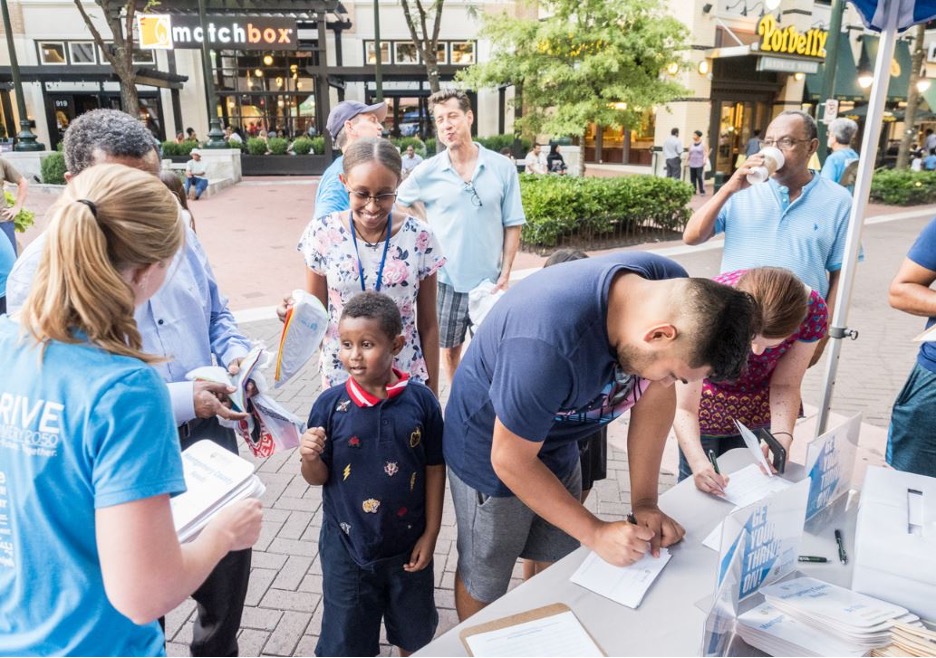
As part of its equitable engagement, Montgomery Planning hosts a variety of community events and meetings to interact with members of the public and share and receive information.
Montgomery Planning’s updated approach leverages a more equitable, transparent, and effective community outreach and engagement process to reverse historical trends and make it easy for all residents, business owners, property owners and leaders to understand and take part in the planning process. Gathering perspectives from a wide range of community members and stakeholders during the master-planning process is critical to developing recommendations that will contribute to more equitable and livable communities in Montgomery County.
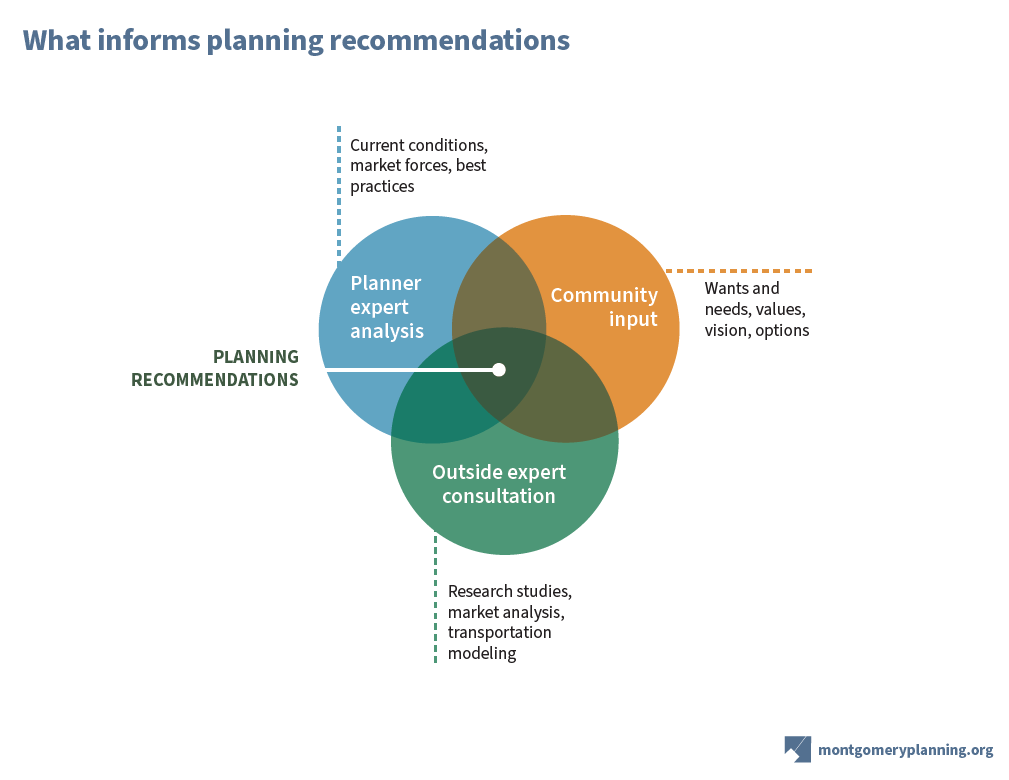
It is critical that we take an equitable approach because our planning recommendations rely on community input in addition to the expertise of our planners and data sources. Source: Montgomery Planning’s Equitable Engagement Guide
Our Updated Approach
Our approach to engagement is defined by our values, informed by data, and grounded in best practices. In 2020, Montgomery Planning developed the Equity Agenda for Planning, which serves as the foundation for our approach to equity and calls on us to include historically marginalized residents and stakeholders in planning, implementing, and evaluating proposed policies or projects. The Equity Agenda for Planning defines our ongoing commitment to systemically dismantle the institutional and structural racism that exists in – and has long influenced – planning and zoning processes and to prevent that influence in the future.
The following principles guide our approach to equity:
- Equity in planning cannot exist unless there is equity in our communications and engagement with community members. Montgomery Planning is committed to better understanding our diverse audiences so that we may meet them where they are and create messages, information, and outreach and engagement strategies that include all residents in the planning process, especially those who have been historically excluded or experienced barriers to participation.
- Trust is central to equitable communications and planning. Community members are not likely to participate in planning processes if they do not believe that their participation can influence the decisions, plans, and policies. Therefore, we must honor people’s time and capacity for participation, taking an audience-centric approach to honest and transparent outreach and engagement. This includes building awareness of and trust in Montgomery Planning with ongoing communications to clarify Planning’s role and value to all stakeholders and to increase equitable community stakeholder engagement with the planning process.
- Meeting the needs of diverse populations requires us to embrace a learning culture and remain adaptable and flexible. While there is urgency behind our efforts to create more equitable outreach and engagement, we celebrate learning while doing, constantly building and evolving as we learn more about and from community members. We must develop short- and long-term strategies, making meaningful progress each day.
- A focus on outcomes is essential to effective, equitable communications. Equitable outreach and engagement require thoughtful planning and cooperation among planners and communications staff. This starts with identifying and understanding distinct audiences, then clearly defining desired outcomes so that we may develop appropriate and targeted strategies to design and activate equitable, audience-focused outreach and engagement. A focus on outcomes is also needed to measure our efforts and progress to develop best practices further and identify opportunities for improvement.
- A strong network of partners is crucial to success. To achieve equity, Montgomery Planning must work with a network of partners: institutions, other government agencies, community-based organizations, businesses, education, nonprofits, and others to reach and engage diverse audiences so that they may inform and strengthen our work.
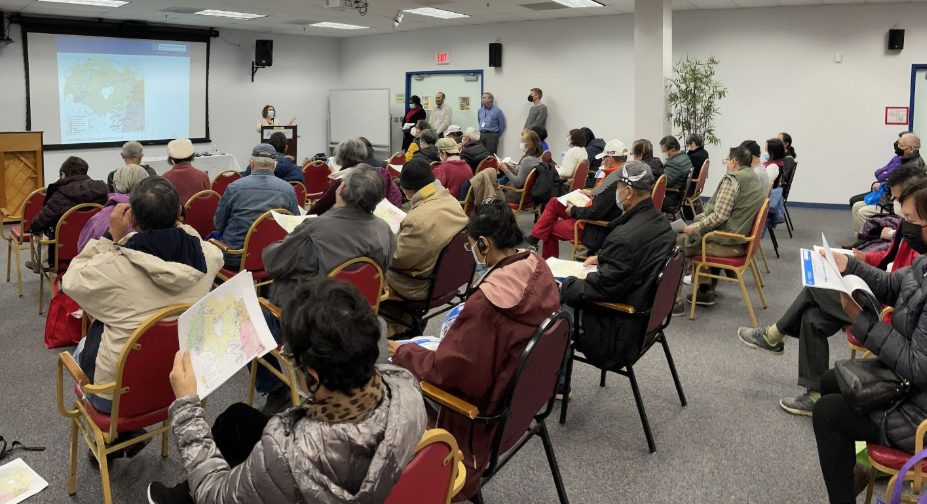
Montgomery Planning held a community meeting in November 2022 at the Chinese Culture and Community Services Center (CCACC) in the Great Seneca Plan area boundary. The CCAC is a community organization that provides healthcare, education, recreation, and other community services to the Chinese community in the region. Montgomery Planning staff co-hosted two meetings with the CCACC. Both meetings were bilingual; materials were distributed in English and simplified Chinese and Mandarin interpreters provided simultaneous translation.
The Data
Our planners study U.S. Census data to understand the demographics of the communities they support. This is critical because data show our county has become significantly more diverse over the last 25 years. Planners carefully integrate the feedback they receive from the community into their overall data for the communities included in the boundary of a master plan. This is achieved through conversations with community partners to understand the full picture of issues, challenges, needs, and values. Engagement reports are presented to the Planning Board to reflect what planners have heard during the planning process. Engagement reports from recent plans such as the Takoma Park Minor Master Plan Amendment, the Fairland and Briggs Chaney Master Plan and the Great Seneca Plan include data, the analysis of the data, as well as feedback from the community. These reports lay the foundation for a plan’s recommendations.
Additionally, data tools like our Community Equity Index provide planners and the community with a more detailed look at neighborhoods, layering information about income, education, housing tenure, poverty rate, and English language proficiency. Also, data from the Mapping Segregation Project sheds light on which communities were impacted by overtly and covertly racist policies and practices, including government actions, redlining, and the use of restrictive covenants that prohibited the sale, rent, lease, or occupation of property by particular groups of people.
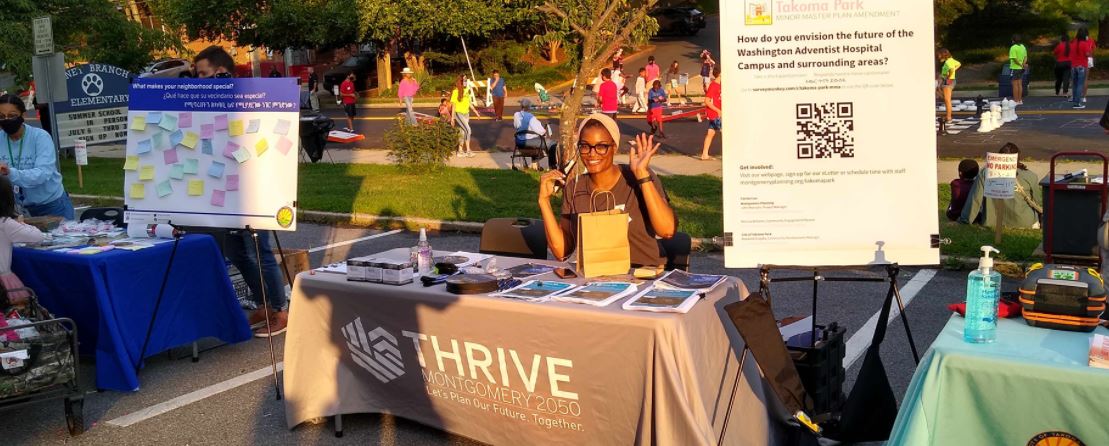
Montgomery Planning staff often participate in community events to interact with residents during the planning process. This photo was taken at an event in Takoma Park, MD as part of the engagement efforts for the Takoma Park Minor Master Plan Amendment.
Best Practices
An audience-centric approach, data analyzation, and a commitment to equity must be combined with best practices for a lasting impact. We have embraced an approach to reach our community members where they are, so they feel welcomed and heard in the planning process. This includes interpretation and translation of presentations; meetings held at locations accessible by public transportation and at convenient times for the community; culturally responsive facilitation; opportunities for written and oral input; and much more. Another key component to our equitable engagement approach is building trust with the community to work with residents as liaisons or mediators as part of the planning process. We are focused on continuing to have a deeper understanding of stakeholders and their needs and values so that the development of the engagement strategy represents the people we are trying to reach. When appropriate, our planners are also capturing demographic information from stakeholders to ensure that all voices from the community have been engaged and their input is reflected. A recent example of closing the feedback loop with the community was in the Silver Spring Downtown and Adjacent Communities Plan when planners outlined all of the comments during the planning process in a “What We’ve Heard” webpage.
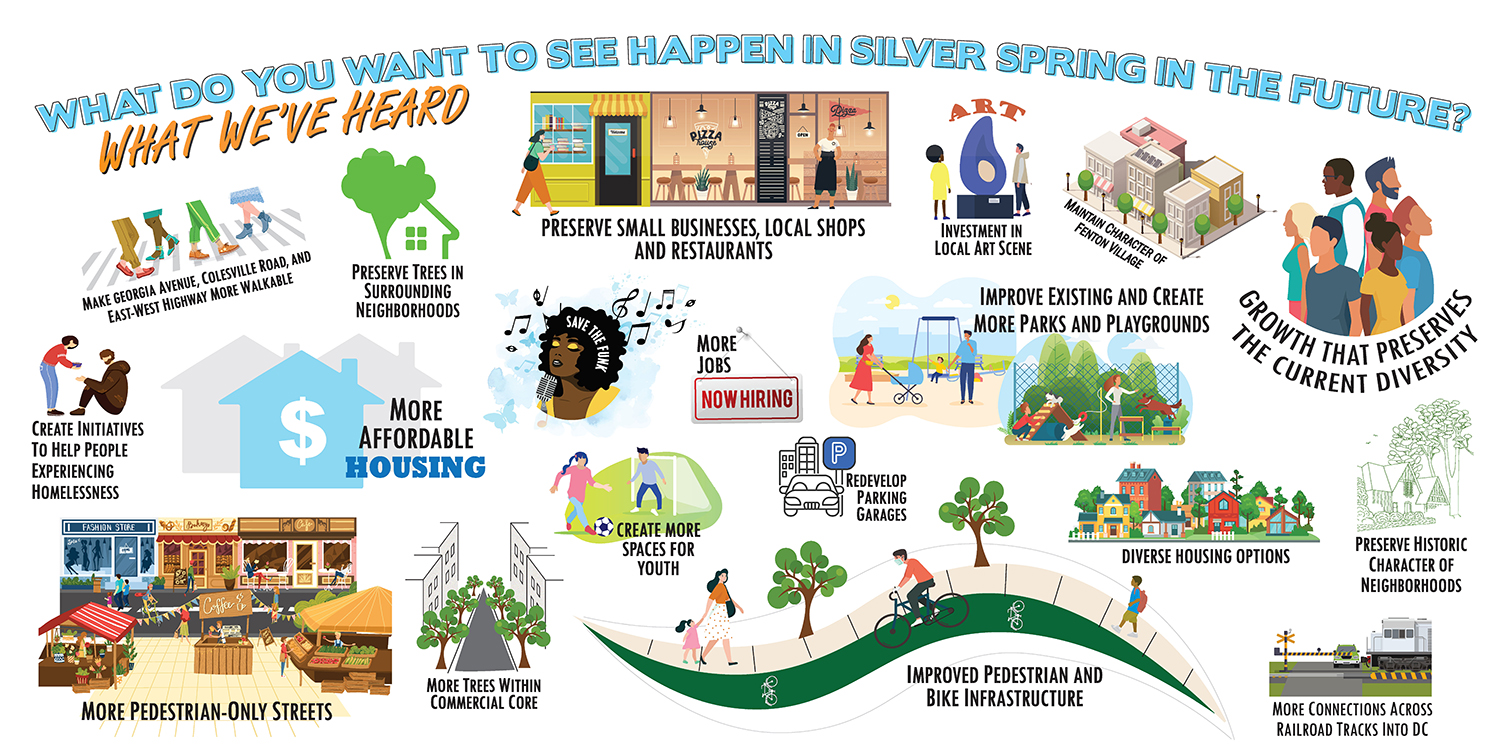
Image from the Silver Spring Downtown and Adjacent Communities Plan “What We’ve Heard” webpage which includes all of the feedback collected from the community during the engagement portion of the master planning process to help inform recommendations.
Recently our approach in two-way engagement with community members was recognized by the Montgomery County Office of Legislative Oversight (OLO) in its report of Community Engagement for Racial Equity and Social Justice (March 2024):
“OLO finds that with a few exceptions (Montgomery Planning and Community Action Agency), departments generally have limited channels for on-going two-way engagement with community members outside of BCCs [Board, Committees and Commissions], especially those that are more characteristic of later stages of the Spectrum of Community Engagement to Ownership where community members have more voice and power in shaping policies, programs, and practices.” (OLO Community Engagement for Racial Equity and Social Justice, page 110)
Our engagement approach has focused on removing barriers to participation and meeting people where they are to make it as easy as possible to participate. Some Montgomery Planning staff recently learned at the Government Alliance on Racial Equity (GARE) DMV Equitable Development Mini-Series training about advancing this concept:
“Meet people where they are…and then don’t leave them there.”
Our planners recognize the importance of closing feedback loops and showing community members how their valuable time and feedback is incorporated into the planning recommendations.

Montgomery Planning implements graphic recording artists for community meetings to draw feedback and ideas in real time and sometimes in multiple languages.
Our approach to equity-centered outreach has served as the backbone of our recent engagements. From community-based plans like the Fairland and Briggs Chaney Master Plan and the Takoma Park Minor Master Plan Amendment to countywide plans like Thrive Montgomery 2050 and the Pedestrian Master Plan, we have worked diligently to build trust and knowledge through transparent and inclusive strategies that make room for all community members.
Montgomery Planning produced a video recapping the Fairland and Briggs Chaney Master Plan pedestrian audit of the plan area. Our planners partnered with Independence Now, an advocacy group for people with disabilities, to experience the pedestrian experience in the plan area and to inform plan recommendations that are responsive to the community.
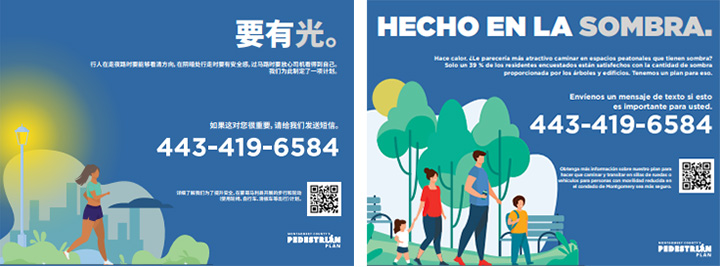
The Pedestrian Master Plan team used text-back technology on yard signs on Montgomery Parks property in the county’s most diverse communities to ask for feedback from pedestrians in multiple languages.
To ensure consistent implementation of these equitable engagement practices, we produced the Equitable Engagement Guide. The guide leans on guidance from the American Planning Association and the Government Alliance on Race and Equity (GARE) and serves as the go-to resource for Montgomery Planning staff to implement equitable, inclusive, and effective community dialogue and engagement. It includes recommendations for engagement at every part of the process, from the launch of the work program to the implementation of the master plan.

Montgomery Planning’s Equitable Engagement Guide includes guidance for planners on how to equitably engage with community members during the master-planning process. The guide is available online.
While we have made considerable progress toward achieving greater equity, we know there is more work to be done. Montgomery Planning staff know that it will take time and consistent application of what we are learning to develop a deep understanding of diverse audiences, apply different communications methods, and build trust. Equitable engagement is critical to planning our county’s present and future.
Connect with Montgomery Planning
- Check out and subscribe to our many plan- and project-specific eletters.
- Follow and like us on our social media channels: X – @montgomeryplans | IG – @montgomeryplanning |
FB – com/montgomeryplanning - Learn more through our online videos.
- Contact staff at Montgomery Planning.
- Watch or attend weekly Planning Board
- Ask a question of our staff at our Information Counter.
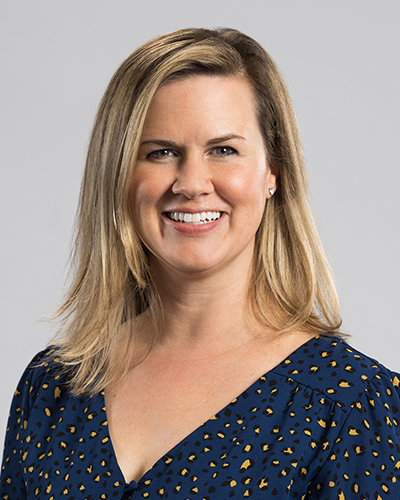
About the author
Bridget Broullire is a lifelong Montgomery County resident who is dedicated to the mission of Montgomery Planning: improving the quality of life in Montgomery County by planning the natural and built environments for current and future generations. As Acting Deputy Director, Bridget oversees the following divisions: Communications, Management Services, Information Technology & Innovation, and Research and Strategic Projects. She is passionate about creating and increasing trust in Montgomery Planning so that all community members are welcomed into the planning process.